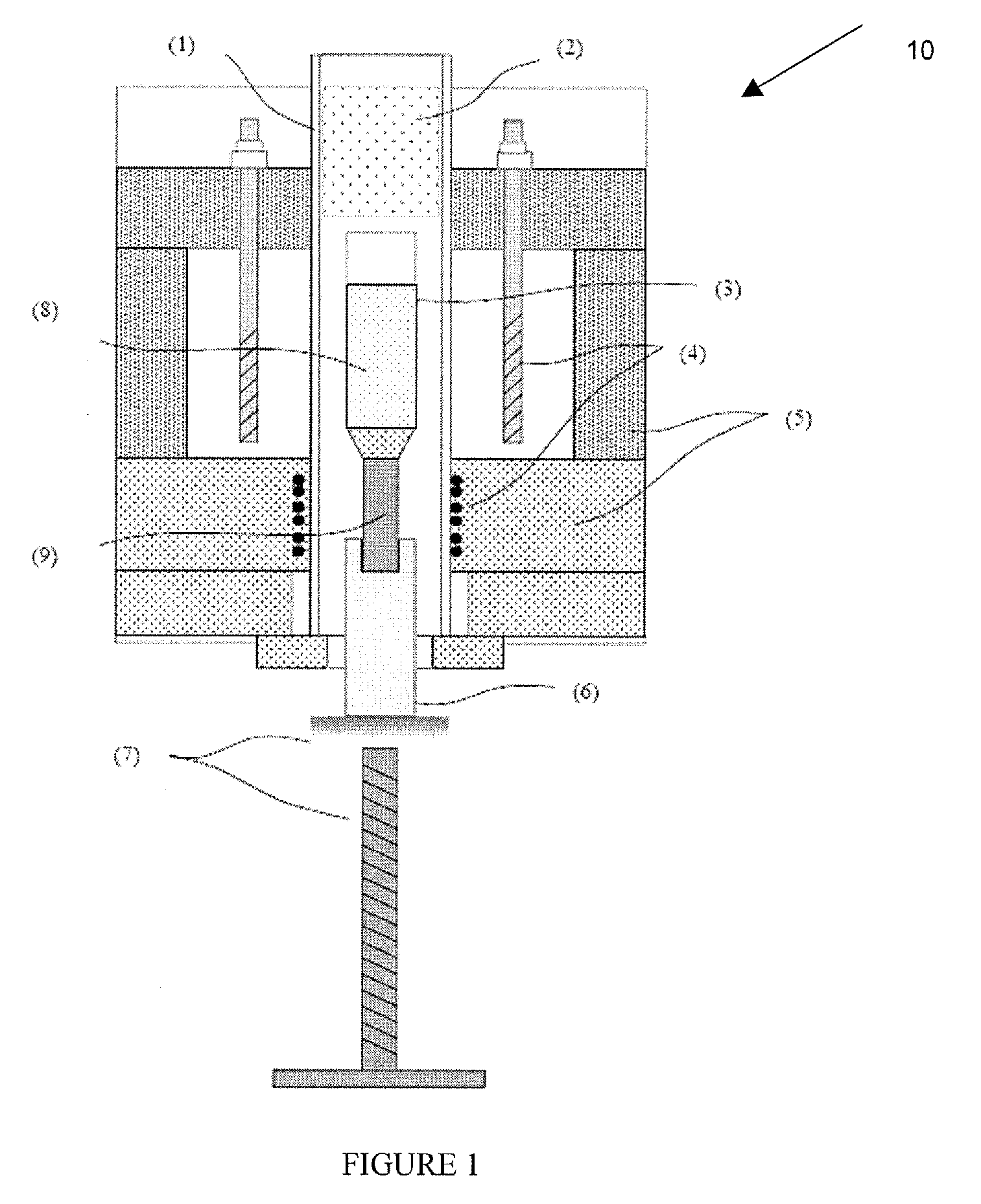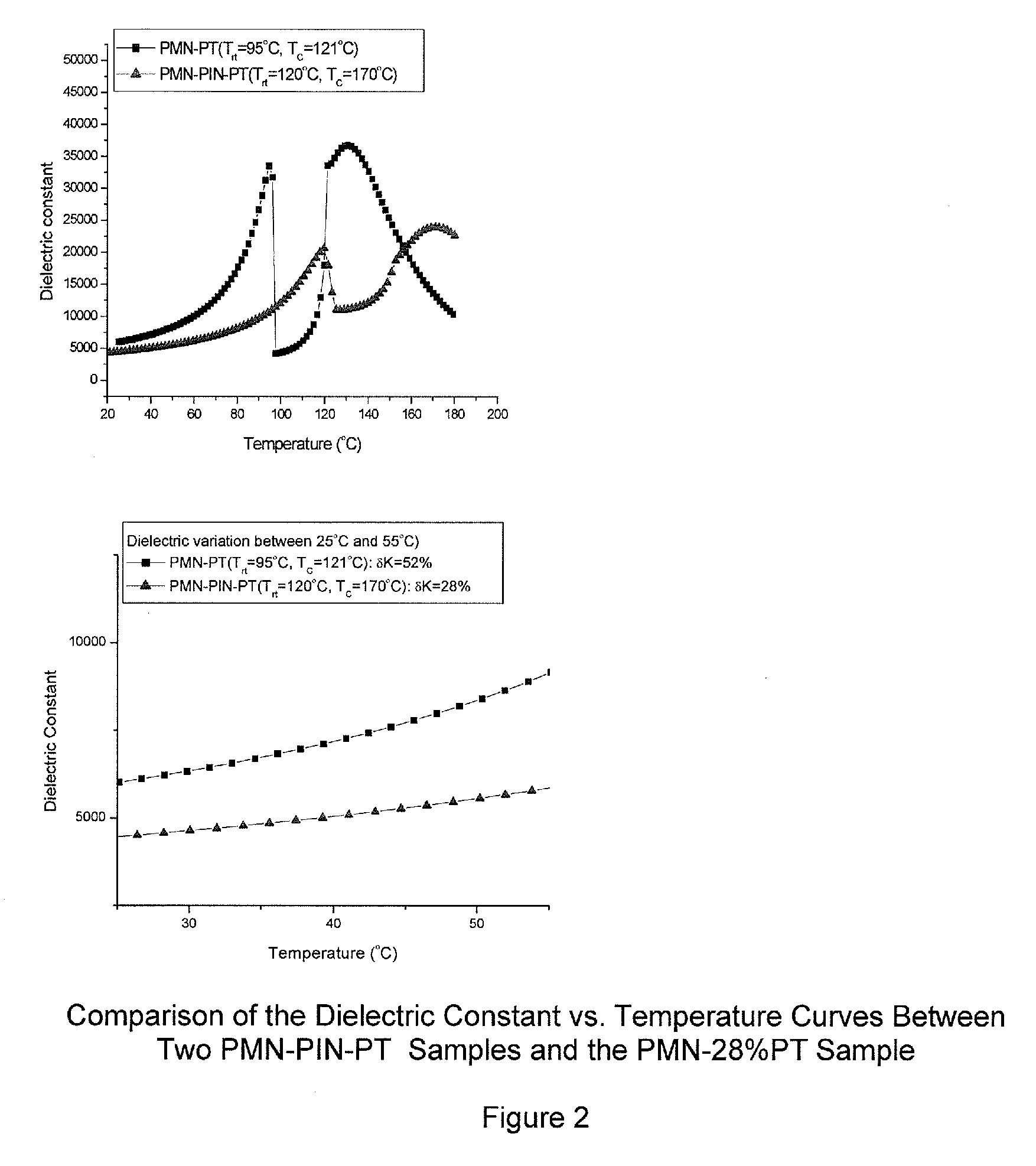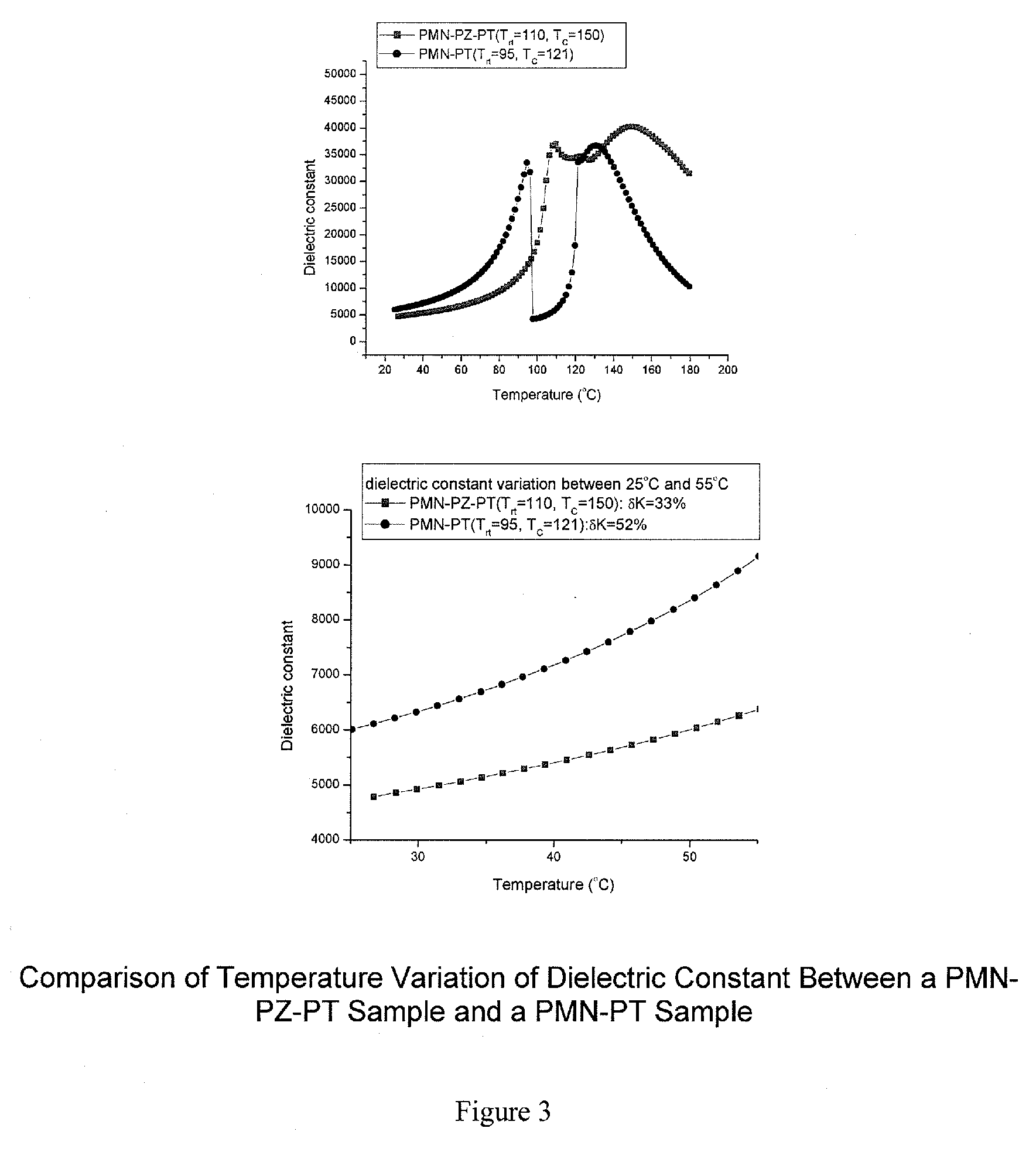Method of making ternary piezoelectric crystals
a piezoelectric crystal and single crystal technology, applied in the direction of crystal growth process, polycrystalline material growth, chemistry apparatus and processes, etc., can solve problems such as deformation or polycrystallinity
- Summary
- Abstract
- Description
- Claims
- Application Information
AI Technical Summary
Benefits of technology
Problems solved by technology
Method used
Image
Examples
example 1
[0027]PMN-PZ-PT Crystal Growth: A typical Bridgman growth of PMN-PZ-PT (3 mole % PZ and 31 mole % PT) crystal is described as follows: Columbite precursor, MgNb2O6, was presynthesized by mixing, milling and calcining a stoichiometric mixture of MgO and Nb2O5 powder with 99.99% purity. MgO and Nb2O5 powder were mixed with ethanol by volume ratio of about 1:4 and then milled by yttrium stabilized zirconia (YSZ) media on a ball mill for about 24 hours. The powder was dried in an oven at about 50° C. (122° F.) and then was sieved through an 80-mesh nylon screen. Finally, the powder was calcined at about 1150° C. (2102° F.) for about 4 hours. Pure columbite phase was confirmed by x-ray diffraction (XRD). The final particle size of MgNb2O6 was about 2 microns According to the stoichiometry of the ternary compound, PbO (69.004 wt %), MgNb2O6 (20.82 wt %), ZrO2 (2.52 wt %) and TiO2 (7.656 wt %) were milled by YSZ media on a Sweco vibratory mill for about 16 hours and then dried in an oven a...
example 2
[0029]PMN-PZ-PT Crystal Growth: A typical Bridgman growth of PMN-PZ-PT (5 mole % PZ and 33 mole % PT) crystal was performed as follows: Columbite precursor, MgNb2O6, was presynthesized in the same way described in Example 1, above. According to the stoichiometry of the ternary compound but with 1 mol % extra PbO, PbO (68.595 wt %), MgNb2O6 (19.25 wt %), ZrO2 (4.134 wt %) and TiO2 (8.021 wt %) were weighed and milled with ethanol for 16 hours. All the processes were as in Example 1, except that the powder was calcined at about 850° C. (1562° F.) for about 4 hours. The synthesized compound was then charged into a tapered platinum (Pt) crucible. The Pt crucible was about 15 mm (0.6 in.) in diameter and about 100 mm (3.94 in.) in axial length with a 5 mm diameter and 50 mm long seed well. No single crystal seed was charged into the seed well for this run.
[0030]A vertical Bridgman furnace as shown in FIG. 1 was used for the crystal growth. The maximum temperature for the upper and lower ...
example 3
[0031]PMN-PIN-PT Crystal Growth: A typical Bridgman growth of PMN-PIN-PT (29 mole % PIN and 31 mole % PT) crystal was performed as follows: Columbite precursor, MgNb2O6, was presynthesized in the same way described in Example 1. Wolframite precursor, InNbO4, was synthesized by mixing, milling and calcining stoichiometric In2O3 and Nb2O5 powder with 99.99% purity. In2O3 and Nb2O5 powder was mixed with ethanol by volume ratio of 15:85 and then was milled by YSZ media on a Sweco mill for about 24 hours. The powder was dried in an oven at about 50° C. (122° F.) and then was sieved through an 80-mesh nylon screen. Finally, the powder was calcined at about 1100° C. (2012° F.) for about 4 hours. Pure wolframite phase was confirmed by XRD. The final particle size of InNbO4 was about 2 microns. According to the stoichiometry of the ternary compound but with 0.25 mol % extra PbO, PbO (68.066 wt %), MgNb2O6 (12.416 wt %), InNbO4 (11.985 wt %) and TiO2 (7.533 wt %) were weighed and milled by YS...
PUM
| Property | Measurement | Unit |
|---|---|---|
| Temperature | aaaaa | aaaaa |
| Temperature | aaaaa | aaaaa |
| Temperature | aaaaa | aaaaa |
Abstract
Description
Claims
Application Information
 Login to View More
Login to View More - R&D
- Intellectual Property
- Life Sciences
- Materials
- Tech Scout
- Unparalleled Data Quality
- Higher Quality Content
- 60% Fewer Hallucinations
Browse by: Latest US Patents, China's latest patents, Technical Efficacy Thesaurus, Application Domain, Technology Topic, Popular Technical Reports.
© 2025 PatSnap. All rights reserved.Legal|Privacy policy|Modern Slavery Act Transparency Statement|Sitemap|About US| Contact US: help@patsnap.com



